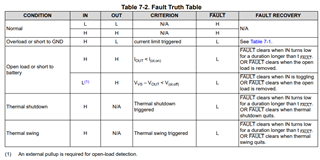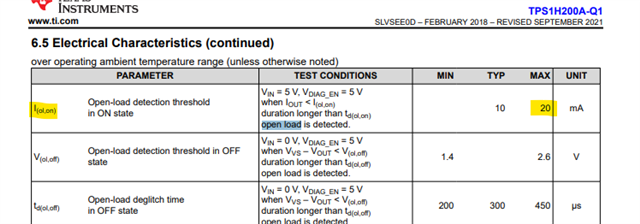Hi All,
We are using the overload protection IC TPS1H200AQDGNRQ1 in our design, We have designed in such a way that Fault pin is Pulled High with 10K 3.3V and when IN pin is enabled we are getting proper output (High) and status of the Faut pin is Low which is not right as per the Datasheet, One more point we have pulled up the Delay pin with 100k 5V which will work in auto retry mode, could you please give clarity on Fault pin misbehaving functionality.
Thanks and regards
Tejas



